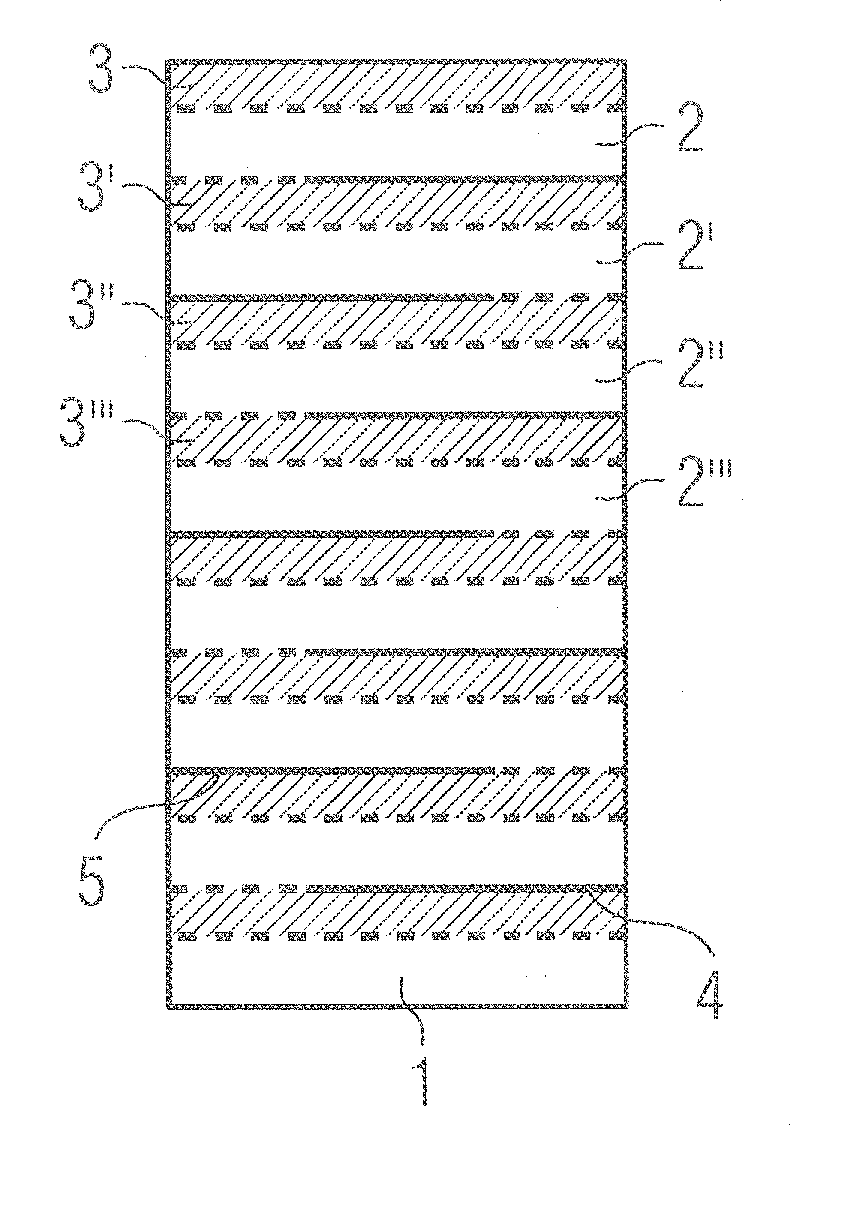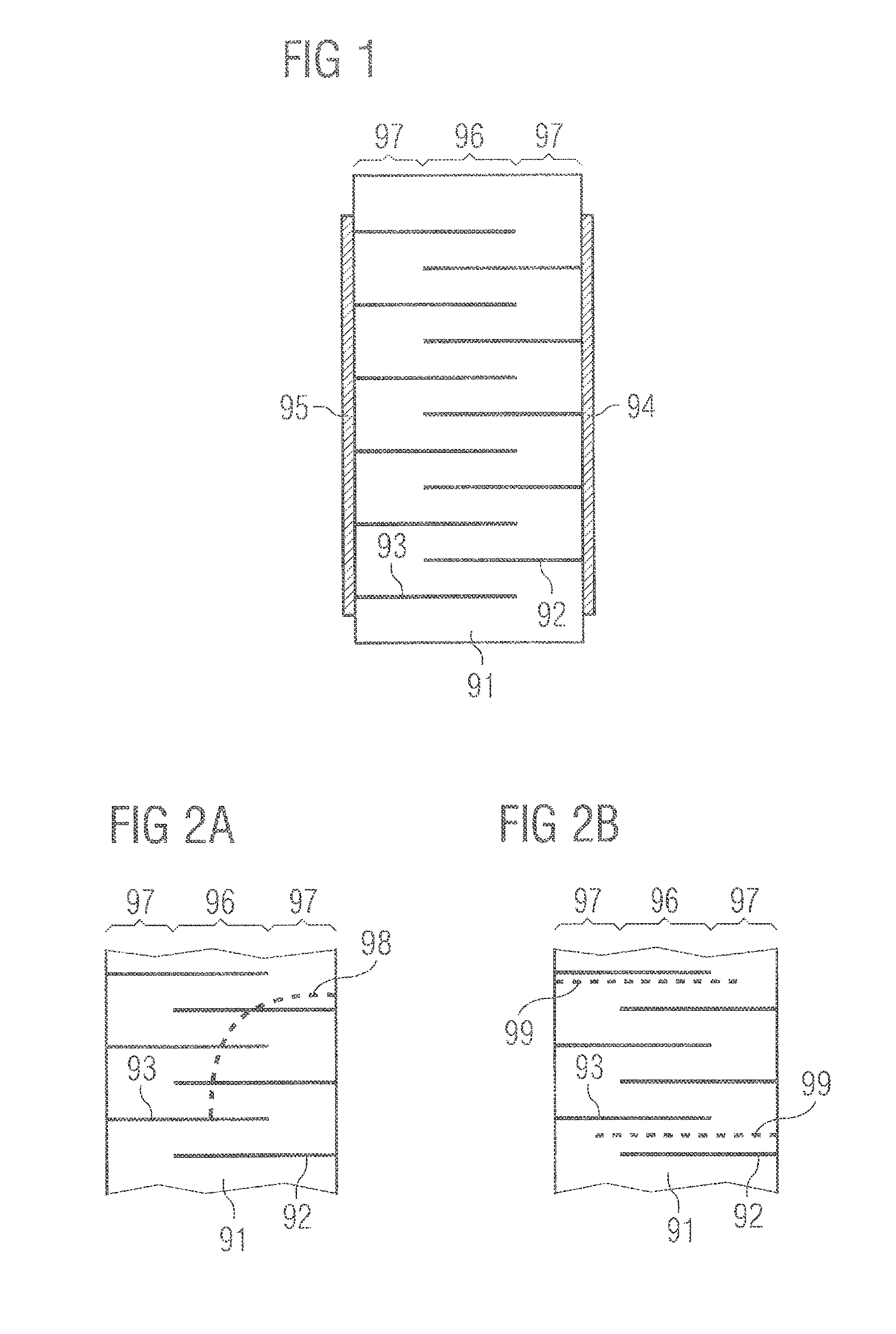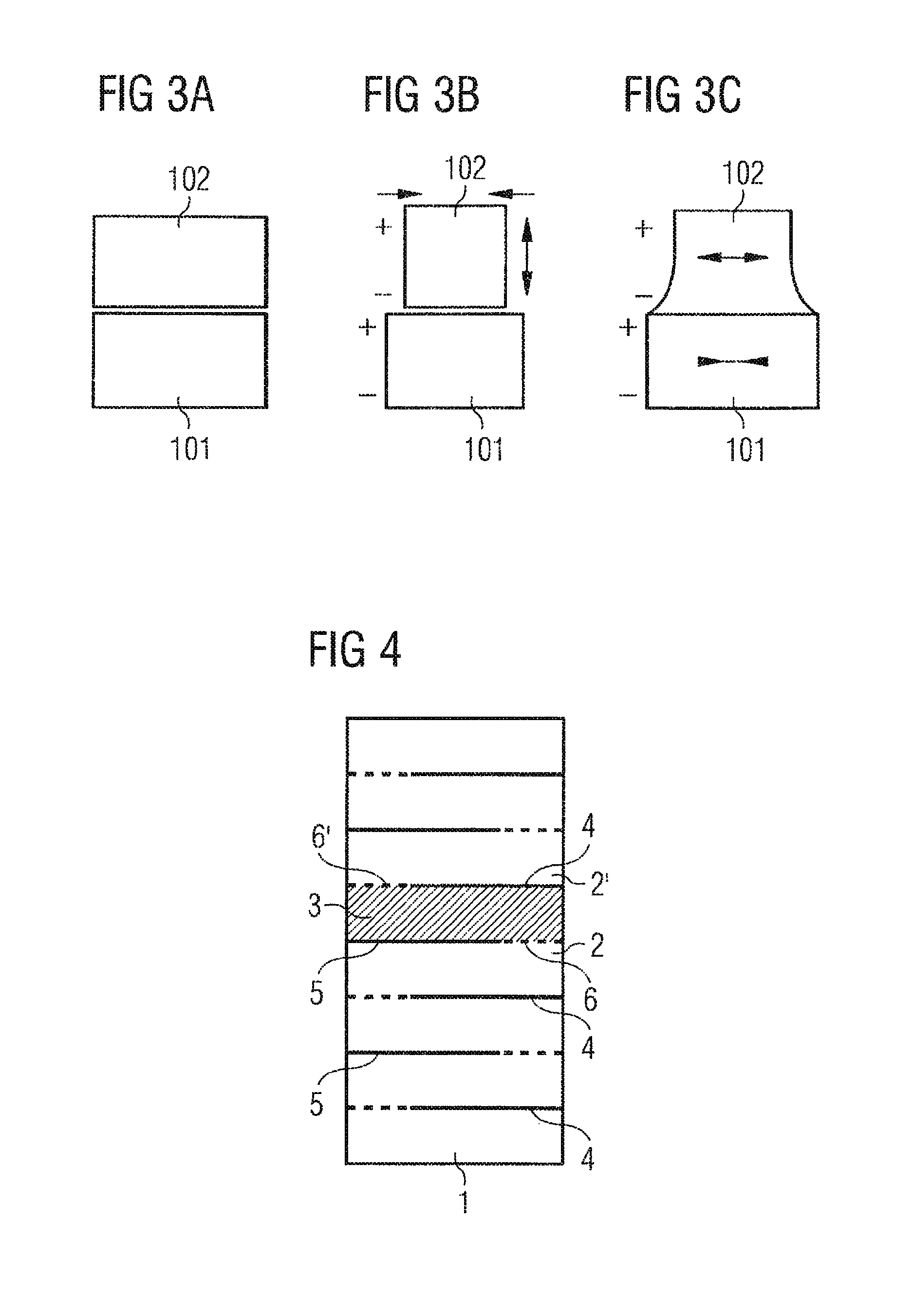Piezoelectric component
a technology of piezoelectric actuators and components, applied in piezoelectric/electrostrictive/magnetostrictive devices, basic electric elements, generators/motors, etc., can solve the problems of uncontrolled cracking, failure of piezoelectric actuators, etc., to avoid or reduce uncontrolled cracking
- Summary
- Abstract
- Description
- Claims
- Application Information
AI Technical Summary
Benefits of technology
Problems solved by technology
Method used
Image
Examples
Embodiment Construction
[0063]FIG. 1 illustrates a known multilayered piezoelectric actuator comprising a stack 91 having a plurality of layers of a piezoelectric material with internal electrodes 92, 93 between the piezoelectric layers. In this case, the same piezoelectric material is used in the entire actuator. The internal electrodes 92, 93 are in each case embodied in a type of comb structure in the form of intermeshed combs. By means of contact areas in the form of metallizations 94, 95 at the outer side of the stack 91, an electrical voltage can be applied between the internal electrodes 92, 93. In the active region 96 of the stack 91, in which the internal electrodes 92, 93 are arranged alternately one above another, a piezoelectric stroke can be effected by an expansion of the piezoelectric material of the actuator. In the inactive regions 97 of the stack 91, only a very small electric field is built up by the application of an electrical voltage to the internal electrodes 92, 93, such that in the...
PUM
| Property | Measurement | Unit |
|---|---|---|
| particle size | aaaaa | aaaaa |
| particle sizes | aaaaa | aaaaa |
| temperatures | aaaaa | aaaaa |
Abstract
Description
Claims
Application Information
 Login to View More
Login to View More - R&D
- Intellectual Property
- Life Sciences
- Materials
- Tech Scout
- Unparalleled Data Quality
- Higher Quality Content
- 60% Fewer Hallucinations
Browse by: Latest US Patents, China's latest patents, Technical Efficacy Thesaurus, Application Domain, Technology Topic, Popular Technical Reports.
© 2025 PatSnap. All rights reserved.Legal|Privacy policy|Modern Slavery Act Transparency Statement|Sitemap|About US| Contact US: help@patsnap.com



